Bonheur, prosperity, longevity or fú lù shòu: three words that brilliantly sum up China's most grandiose party. You will soon understand... China: discovering Chinese New Year!
The Chinese New Year celebrates, like the Day of the Year in our Gregorian calendar, the passage to the new year. Nothing but the name awakens the imagination: costumes with stunning colors, eccentric motifs, tense joys, dragons with lion heads that snake in the streets and millions of flamboyant lanterns in the night.
Yet all this has nothing of a dream. The Chinese New Year is as beautiful, extravagant and extraordinary as you imagine. It is also the opportunity for Chinese to celebrate the spring that points to the tip of its nose. Hence the name of the spring party. The end of the winter, the warmer temperatures that settle, the flowering of the countryside that slowly takes the step and the exceptional brightness of the moon that settles: this low tourist season has a lot to offer. Today we invite you to the heart of this tradition. Follow our adventure in the Middle Empire at its most cheerful and folkloric times.
The History of Chinese New Year
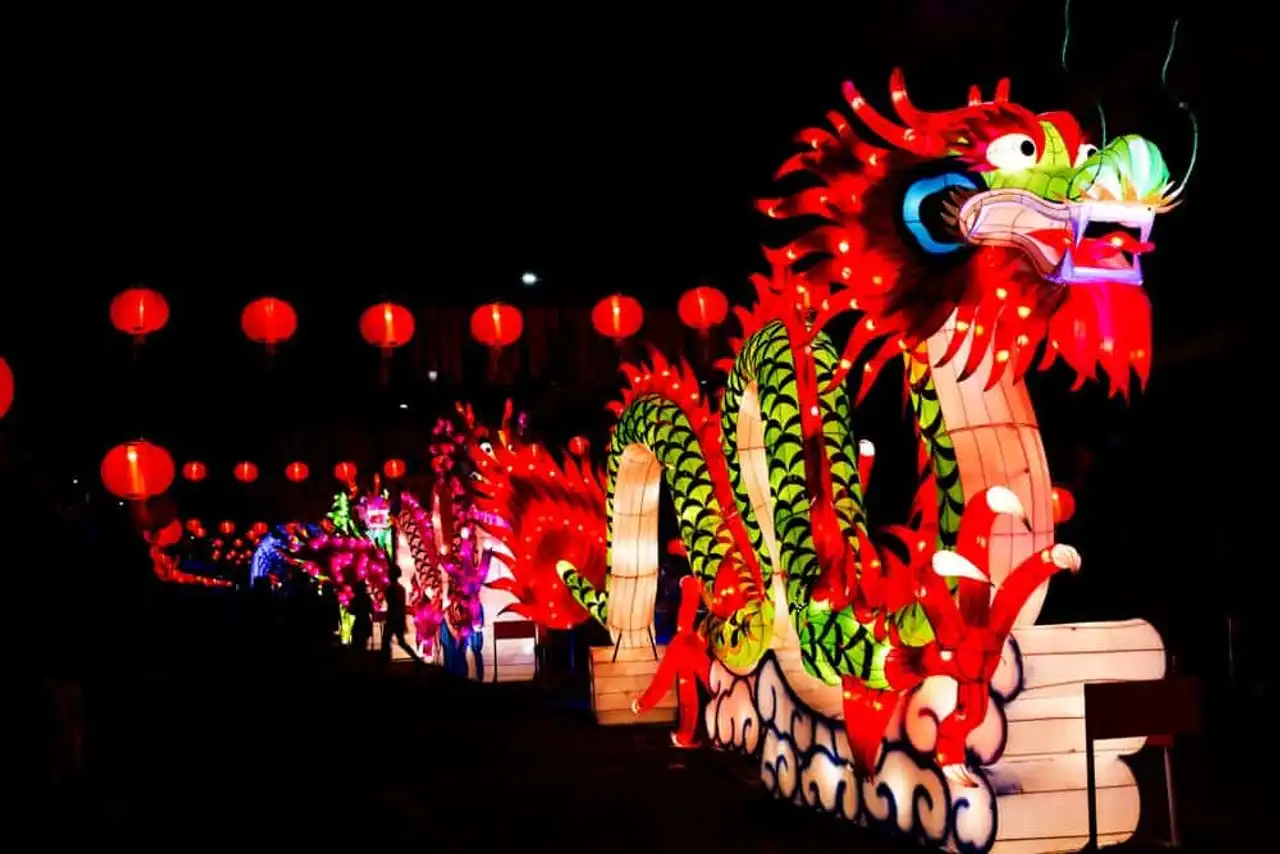
Chinese New Year iconic Dragon – Photo credit: Shutterstock – Aut Pantian
If today this feast has far exceeded China’s borders, few people really know the history of Chinese New Year. Who is the mysterious iconic dragon? Where does this national enthusiasm come from for the new year? Why all these lights, these symbols, these explosions?
Since the fall of the imperial regime for the benefit of the Republic of China in 1912, the country officially adopted the Gregorian calendar. Despite this strategic and political desire to calibrate the Western model, the Chinese remain very attached to their lunar calendar. The latter continues to rhythm their years and bridges between present and past.
So the Chinese would not miss the New Year celebration for anything in the world! It is even the indispensable condition for a good year, far from the old demons of the past and failures. The two weeks following the first day of the year are also placed under the sign of the party, commonly called Spring Day. In January and February, a large part of China flirts with ice temperatures and confines under a snow coat. These fifteen days are therefore an ode to the long-awaited jealousy that, in the past, coincided with the return of the food crop activity.
The day we enter the new year is called Nian . He derives his name from a legendary creature, in the appearance of a bull with a lion head, wandering on China’s land. According to legend, this mythical and hybrid monster came out every year from the forests, during the winter nights, to devour the villagers. He was just running out before daybreak. Over the years, the villagers understood that the creature ended his bloody feast at the edge of the day because he feared light, sounds and red. As they approached the fateful date, they then took the habit of sheltering themselves inside their home, leaving the lights lit, flowering all kinds of red decorations, drumming on pans and, gradually, detonating cockroaches and big fires.
Today, the parades that mark the New Year, whose star is this famous Nian , symbolizes the domestication of this demonic animal and the victory of the Chinese on this scourge.
Commonly, each year of the lunar calendar is also placed under the sign of one of the astrological animals that are the rat, buffalo, tiger, rabbit, dragon, snake, horse, goat, monkey, cock, dog and pig, as well as an element among water, fire, metal, wood and earth. The sign of Chinese zodiac is thus defined by their year of birth.
Preparations: "little" Chinese New Year
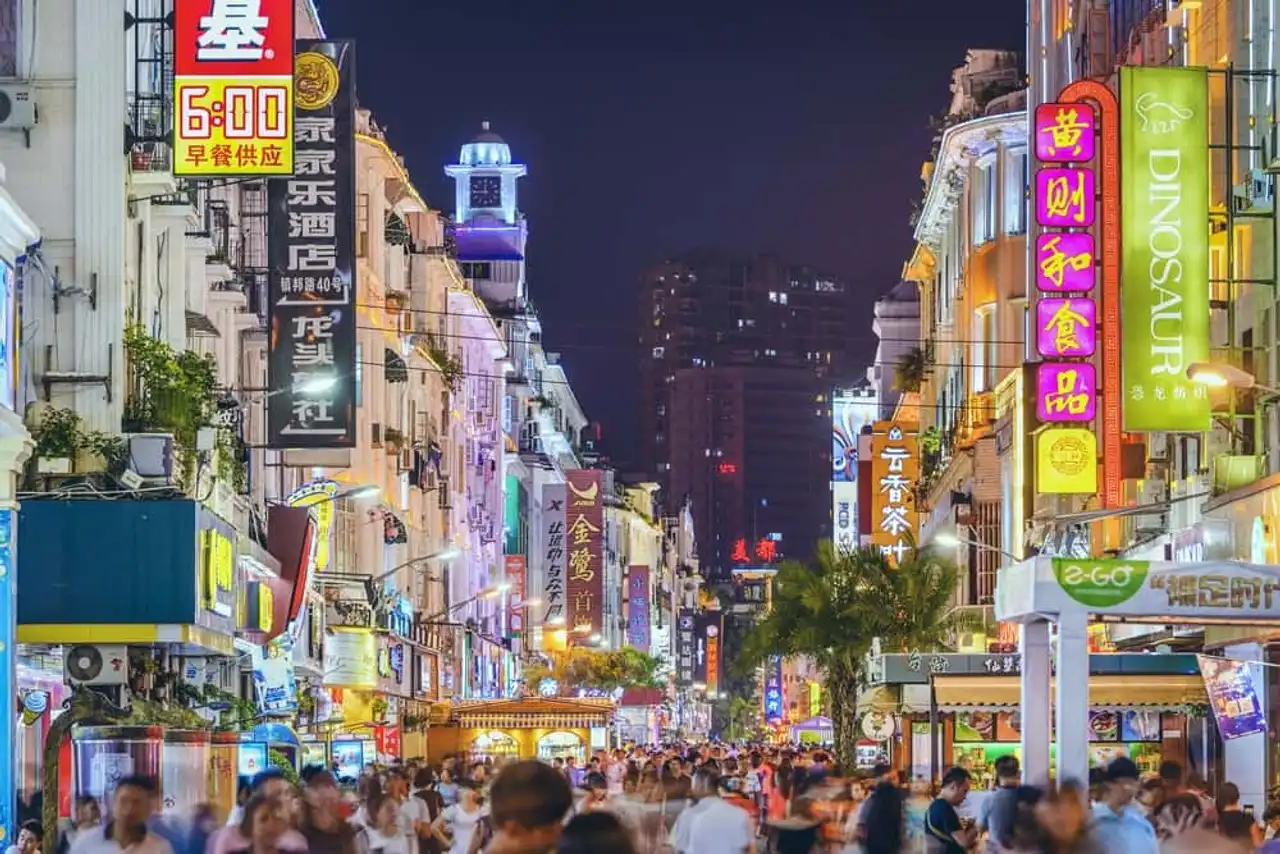
The Chinese flock to the stores to pack for the New Year – Photo credit: Shutterstock – Sean Pavone
After this short return on the origins of the New Year, place the present story of this feast of all superlatives. The Wanderlix teams packed in, headed to China.
Every year, the Chinese New Year falls between January 21st and February 20th of our Gregorian calendar. Fortunately, the date is well known in advance for each family to have time to deal with preparations. As we approach the New Year’s Eve, the whole country is won by a particular atmosphere, between impatience and intensely.
We follow the Middle Empire a week before the real Chinese New Year to celebrate the “little” New Year. During this period, the Chinese seek the good graces of the god of the home by placing food on representations to his effigy. Already, under the winter sun, the red mass activates. Cities, from soil to ceilings, take the color of hot embers. At the doorsteps, the dust rises slowly. It comes from the great cleaning of Chinese. The inhabitants symbolically marked the bad things of the past to leave room for happiness to come.
Moreover, it is better to push his home now because during the days following the New Year, cleaning his home is unhappy. It would be tantamount to taking away from home the newly introduced chance in the house. The Chinese also benefit from it to make a beauty because, as the household, it is good not to wash and cut their hair in the days that follow the New Year.
Then comes the hiding place of dozens of small red paper rolled, discreetly deposited in the rooms of the house. The members of the family have a few wishes for the following year. Tradition also wants families to write a poetic verse on a small red ribbon, to frame around their door. This then gives an incredibly photogenic look to the streets: a breath for photography lovers!
During this week, there is also a real rush in the shops. It must be said that for the occasion and for almost a week, the shops close their doors. The Chinese are first and foremost full of food: dried fruits and candy combine in the homes. Then, there's no question of slowing down on the waking meal that brings the whole family together to the elders. They also buy their red party outfits at unbeatable price. The most traditionalists will even take advantage of it to renew their wardrobe in order to be ready for the arrival of spring.
On the eve of the New Year, the houses are carefully decorated. In families, we feel excitement, tripodation... but also a discrete feeling of stress.
Feast winding
Food, money and pets
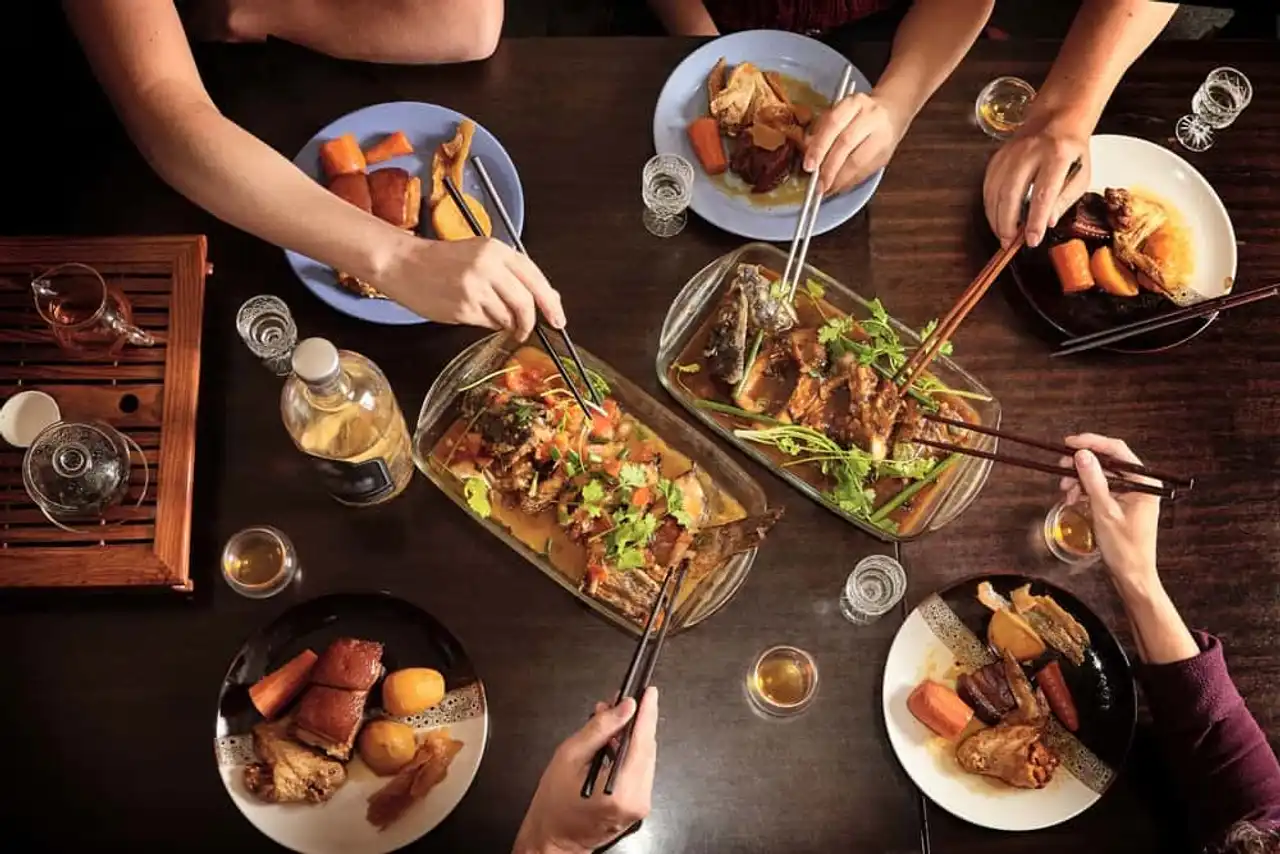
Chinese New Year's Eve meal with family – Photo credit: Shutterstock – Liudmila Kotvitckaia
The Christmas dinner is a family story. Here, no question would be to soak the lips in a glass until the whole family is united! It is easy to understand why delays have come so badly.
Copious is the word of order: fish symbol of opulence, spring rolls and ravioli symbols of wealth, noodles symbol of longevity and happiness, and Niango (gâteau de l’An) symbol of growth. Of course (it’s not a legend), we exchange the traditional biscuits of luck at the end of the meal that contain predictions for the coming year. Oranges and tangerines also defy for dessert. These citrus fruits are considered good luck, prosperity and abundance.
Less appetizing, there are also some odorous algae or dried oysters on the table. These dishes that have the smell of “feet that stinks” are highly symbolic. If there is one on your plate, it is impossible to escape. These foods also mean money and good luck.
During the meal, family members, especially single people, receive red envelopes that contain money. Moreover, the days after the awakening, it is customary to bring this same kind of gift to the children and unmarried people of the families we visit. Some receive up to the equivalent of 1,000 euros in an evening! Be careful, however: never offer a sum that includes a 4! This figure, which is pronounced as the dead word in Chinese, is abhorred in the country. A nostalgic brin, we will nevertheless see that this paper tradition has gradually left room for electronic reindeer. One thing is certain: money has a central place in China. In Asian culture, fortune is as important as health.
At the end of the meal, at a time when the stomachs start digestively and the twelve strokes of midnight, Bengale's pettards and fires explode in the streets. A show given to heart joy by children, but increasingly framed because of multiple accidents.
Insomnia, morning prayers and house tower
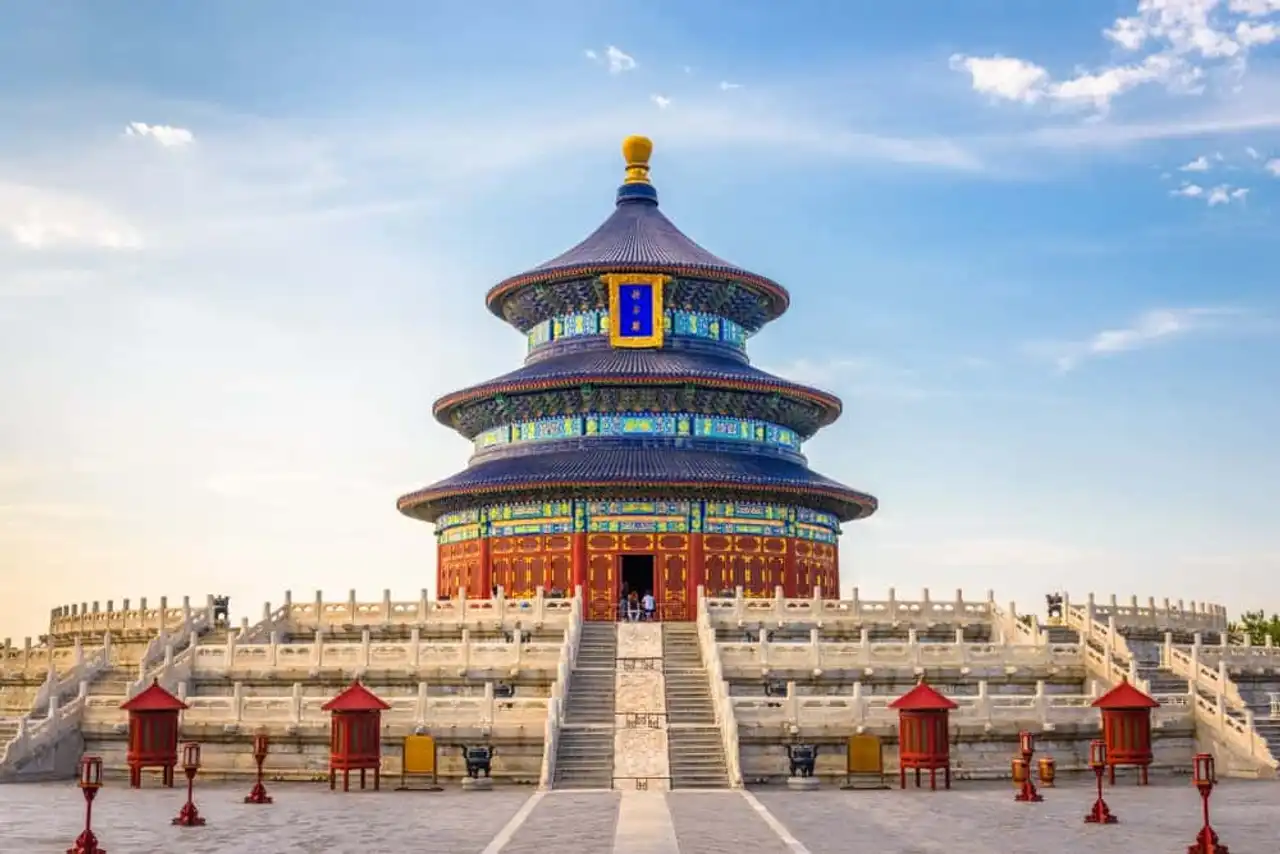
Temple of Heaven, Beijing, China – Photo credit: Shutterstock – Sean Pavone
If we can easily laugh at our white nights at feast, the time of bed is taken very seriously in Chinese. Here it is to the one who sleeps as late as possible because the less we sleep that night, the more we extend his life! Games and screens are set to keep the spirits awake. Moreover, one show Pharaonic is given that night on TV. The hearings explode global meters, even more than the American Super Bowl! Popular singers, humorists, representations of ethnic minorities and communist propaganda on music background resonate in the cottages.
Despite the cruel lack of sleep and the body a little ill led by the Saké, the first morning of the new year must take place in the temple. Each must arrive early in order to promote the chance for the beginning year. Some temples in China even open at midnight pile and others are assaulted at the point of a real morning hue. In the middle of the alleys, the smoke of thousands of incense sticks branded by the zigzague crowd in the sky. Little and great, with shimmering habits, kneel and marmonize prayers.
And it continues, again and again
On the second day, couples and children also go to the mother's family. The red color always dominates, giving rise to a real red ants broom that circulates throughout China.
The following days are devoted to all kinds of celebrations to the gods of riches, of heaven, etc. And we dance too. Especially the lion dance. This traditional dance practiced during the New Year period also takes place during weddings and other important events. Two dancers lock themselves in a lion costume, their four legs representing the four legs, and unhinged with a zealous skill and skill. This practice from the martial arts, which brings luck and distances the evil spirits, also recalls the legend of Nian (or Nianshou ).
At the end of the fifth day, the stores open their doors. Eventually, the Spring Day extends over no less than two weeks, and the end of the festivities is marked by the uncontournable lantern feast.
Lantern feast
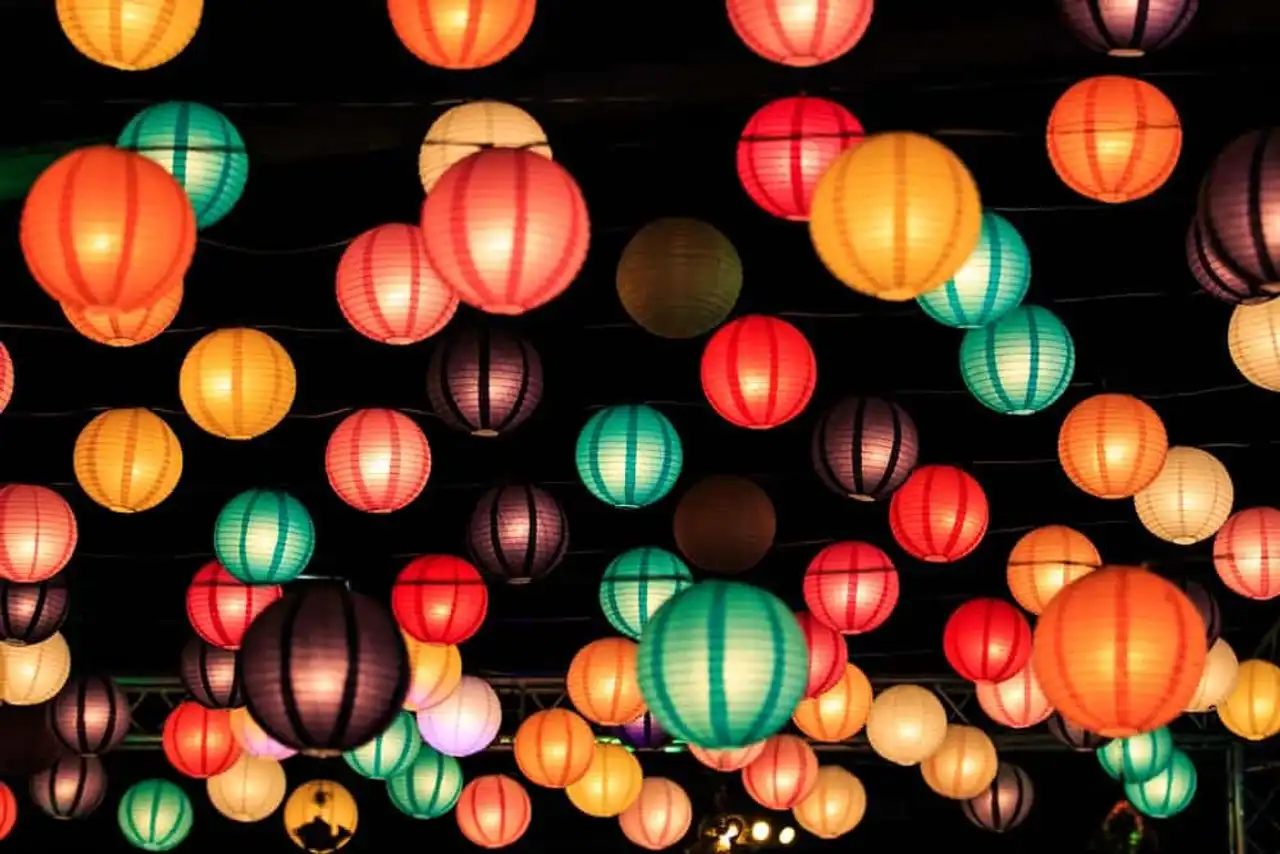
Lantern holiday in China – Photo credit: Shutterstock – apiguide
It is probably the peak of the festivities around Chinese New Year. Few shows compete in terms of magnificence. For centuries, these lanterns igniting the sky were at the effigy of various mythological characters. Today, it is rather the faces of the new characters of the cartoons that rise in the night. Then, the modern era gave way to the light tanks. What? show !
Question food is an opportunity to taste all kinds of soups and stuffed rice pulp balls: a family and generous recipe that has far exceeded China’s borders.
Chinese New Year worldwide
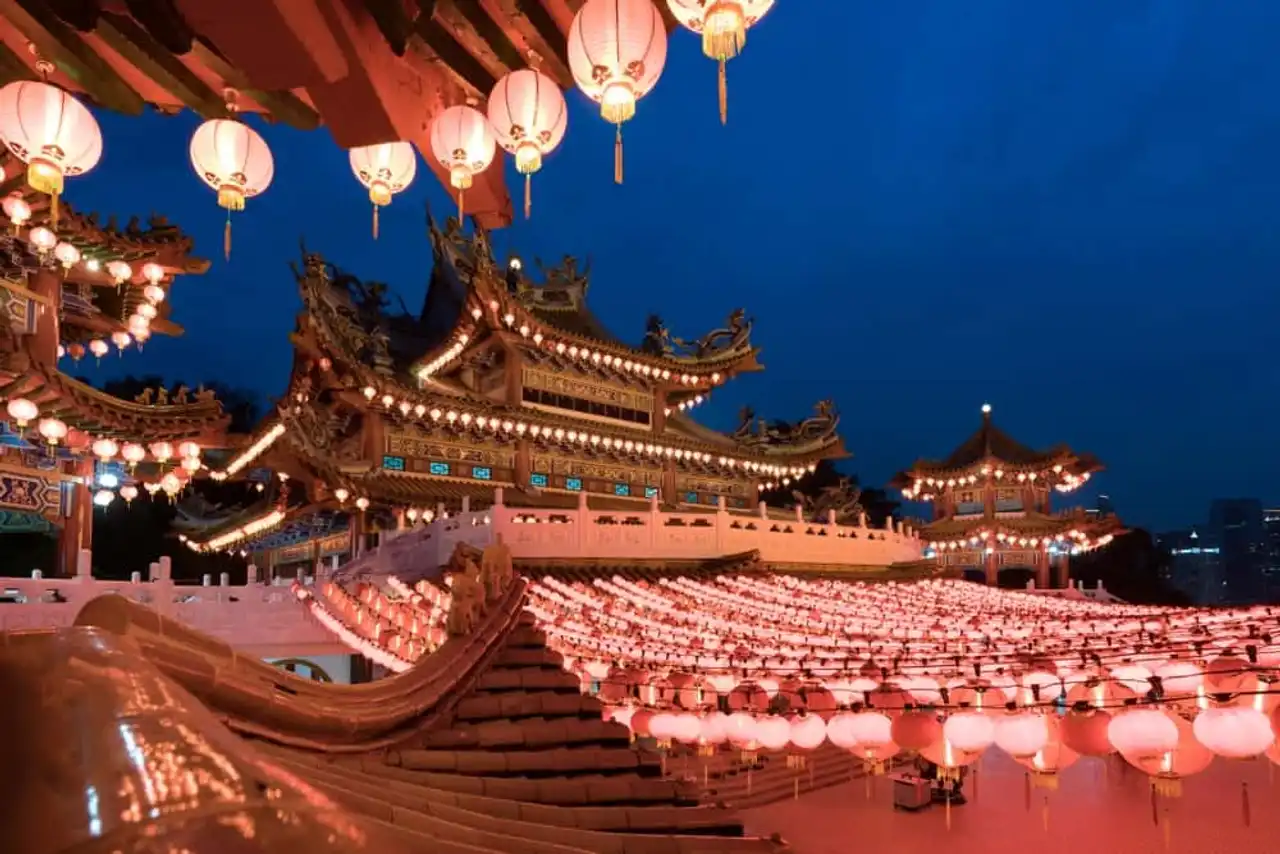
Thean Hou Temple illuminated for the Chinese New Year Festival, Kuala Lumpur, Malaysia – Photo credit: Shutterstock – Travelpixs
This holiday synonymous with holidays, gatherings, traditions and culture has seduced countries around the world. Today, although the charm on the spot is incomparable, you can quite celebrate the New Year Chinese year outside the Middle Empire.
All around the Republic of China, countries such as Taiwan and the two regions of the People’s Republic of China (Hong Kong and Macau) do not make the impasse on this ancestral feast. In Singapore, Malaysia, the Philippines, Brunei, Indonesia, South Korea, and even Thailand, the inhabitants of the country for the occasion are very happy with the festive question. It must be said that all these States are largely influenced by Chinese culture.
Finally, know that the Chinese diaspora has even won Europe and France. From Paris to Lyon, to other provincial cities, it is an opportunity to travel at home.
Where to live his first New Year in China?
Hong Kong parade
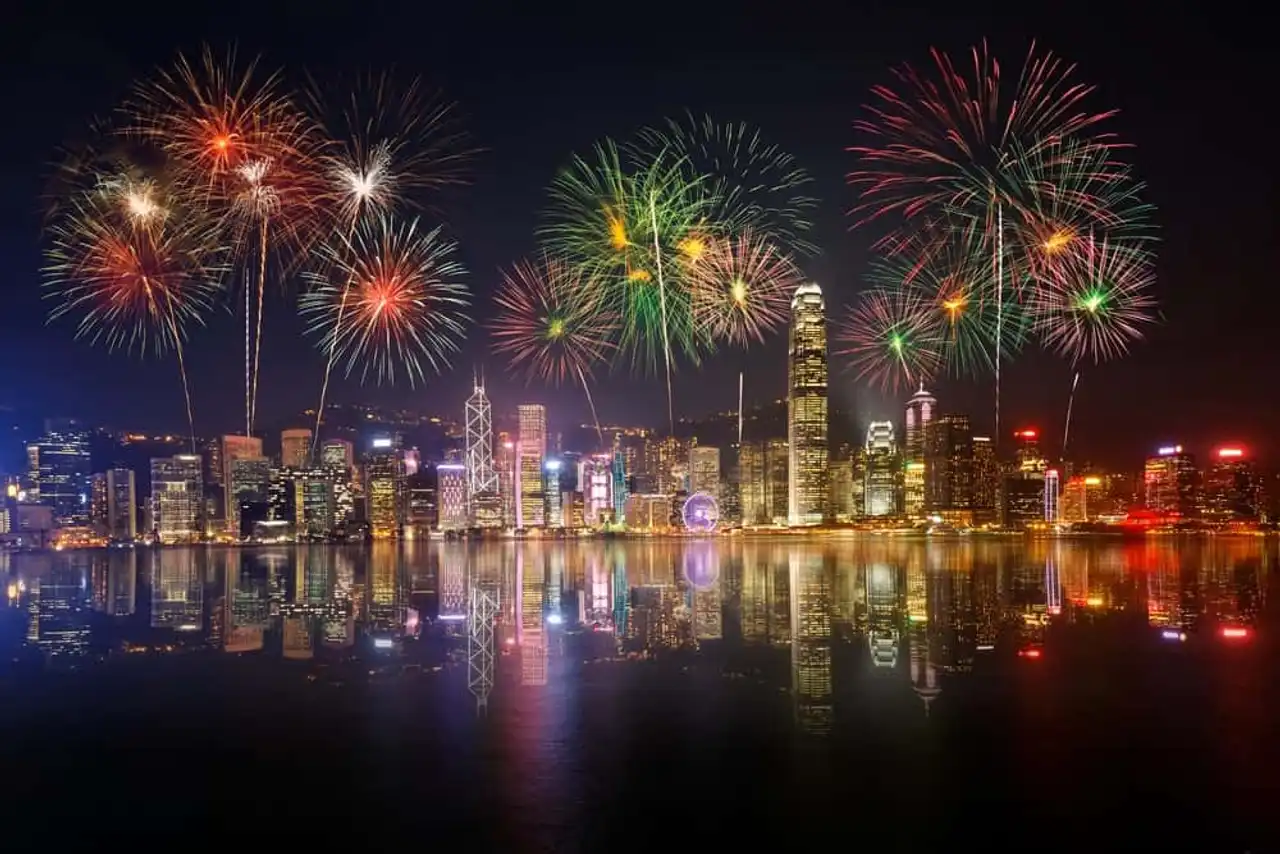
Fireworks in Hong Kong – Photo credit: Shutterstock – Krunja
Feux d’artifices breathtaking, chariots with cyclopean dimensions, thousands of doors set with lanterns, incense at the gates of temples, fantasmagorical shows: it is one of the most prestigious New Year’s festivals in the country. In Hong Kong, tradition also wants flowers for the New Year. The best place to find one? In traditional markets that groan world and experiences for senses.
Shanghai illuminated
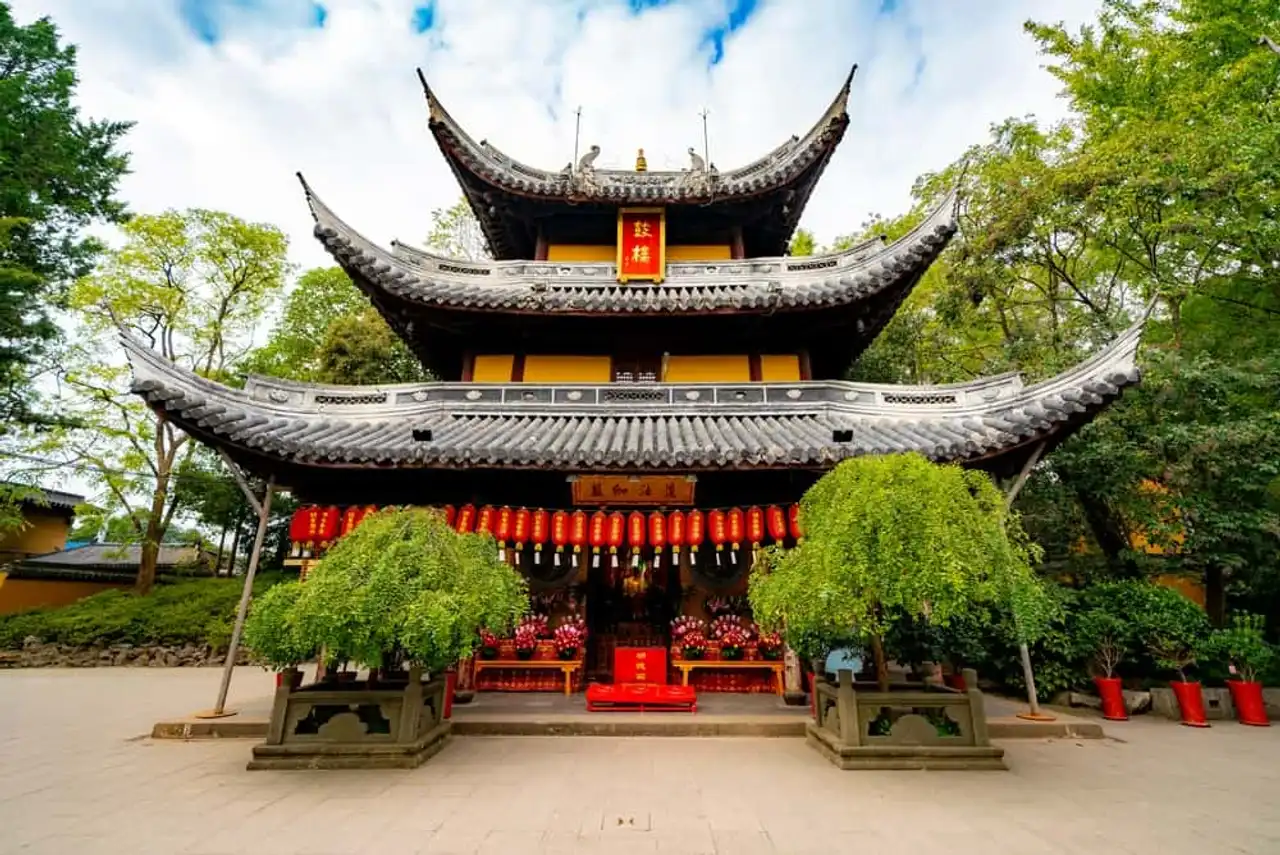
Longhua temple in Shanghai, China – Photo credit: Shutterstock – ItzaVU
It is undoubtedly at the heart of this pearl of the Middle Empire that you will live the most beautiful lantern feast. The city, under the spotlight, offers an exceptional moment in the garden Yuyuan . If there is an abundance of traditional lanterns, there are also many lights combining ancestral art and modern technology. Here too, it is to offer bouquets and plants in pot. To attend religious celebrations, go to the temple Longhua . Dances and songs resonate in the place for more than a week. Everywhere in the city, pyrotechnic wars go well but it is probably on the Bund that show is the most hallucinating.
Beijing represents

Wall of China – Photo credit: Shutterstock – zhanglianxun
The one that is surnamed the Forbidden City opens its arms to the travellers and to the Peruvian in search of a monumental holiday. The capital makes the beautiful part, as nowhere else, to the multiple performances: dragon dances, lion dances, imperial theatre plays, fireworks from the Wall of China: it is a real tourbillon of sounds, colors, smells and flavors for fifteen days. But in Beijing, the rosaries of pettards are banned in the streets.
The campaign perpetuated
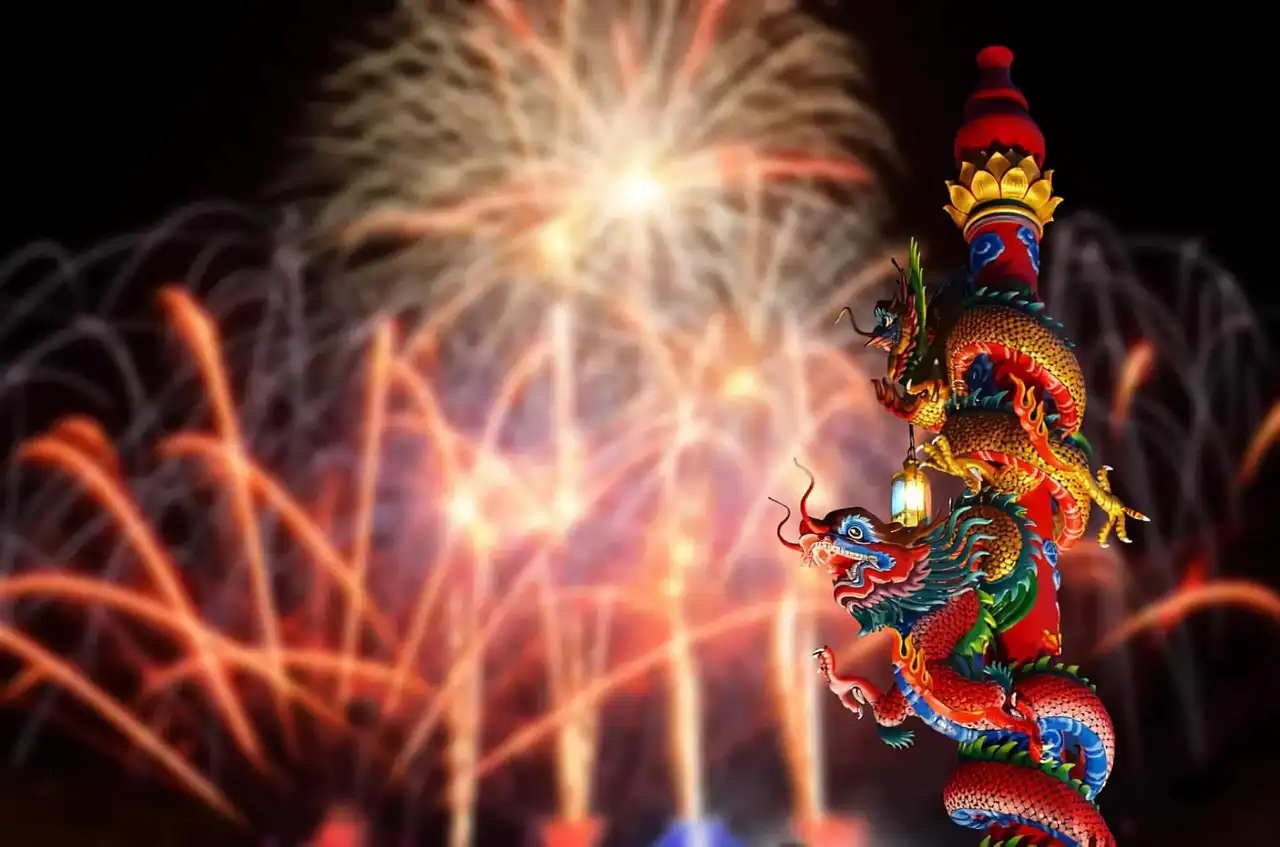
Fireworks for Chinese New Year – Photo credit: Shutterstock – Sonpichit Salangsing
In the Chinese countryside, the party and the animation beat their full. Especially thanks to the migratory flows that occur throughout the festivities. The reunions here have something even more poignant. The celebrations have this delicious touch of authenticity. Hospitality is queen and it is undoubtedly the place of predilection for a New Year Chinese year under the sign of simplicity, sharing and love. It is also far from the big cities that you will be able to witness real flares of fireworks and fireworks drawn by the inhabitants. Where, logically, security and environment issues pose less problems.
The Chinese New Year is a national and large holiday, with overcrowding on roads, stations and airports. It is even the world’s largest human transhumance. So think about booking well in advance and take your pain in patience if you embark on a travelling journey during this period.
What you don't know about Chinese New Year
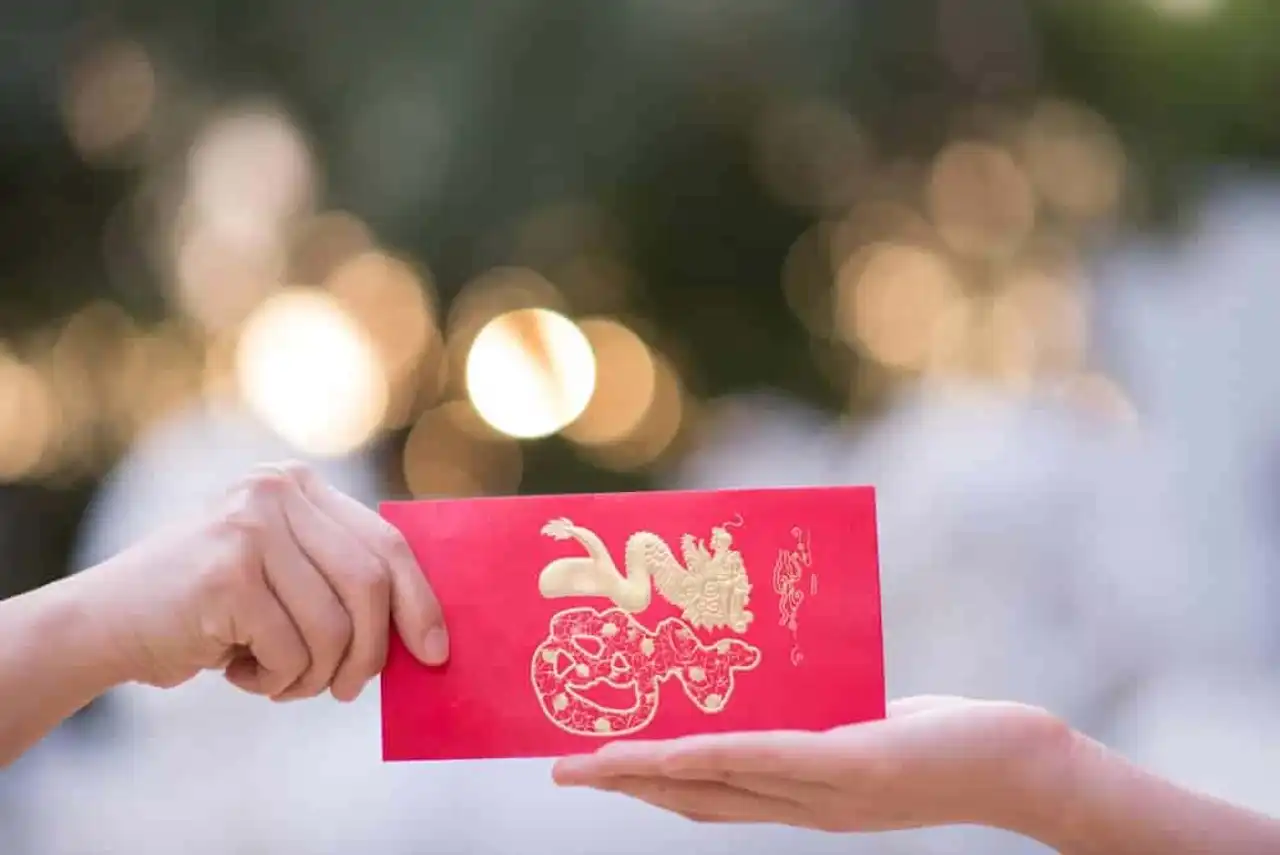
The famous red envelopes full of money, offered for Chinese New Year – Photo credit: Shutterstock – nokkaew
Célibat: between shame and agace
You will have understood, the family dimension is as important as religious and festive dimensions. To such a point that some Chinese have resorted to the services of a false boyfriend or a false girlfriend in order to spend the New Year with family and without congestion. And this even if their celibacy allows them to receive the famous red envelopes full of money. Indeed, while couples live a moment of intense joy, Tanguy of celibacy (after 32 years for men and after 30 years for women) suffer the mockery of their peers and the sermons of their parents. Renting a "sister soul" to spend the holidays, you had to dare!
Buy the concierge silence
The janitors receive a lot of red envelopes... Why? These building guards who have ears and eyes everywhere usually know all the secrets of the inhabitants. Even the most unbelievable. So it is common to slip a little money to his concierge when you have a secret to keep warm...
Tens of taboos around New Year
We told you, we don’t wash your hair and we don’t pass the broom, but what are the other Chinese New Year taboos?
- During the festivities, his clothes were not cleaned during the first and second day of the year;
- Drugs are avoided at the risk of causing the disease during the year that begins;
- If you are a victim of a flight, the penalty is double because it is also prelude to illness;
- During the first breakfast, we make the impasse on the rice boiler. Considered as the dish of the poor, it would break the circle of prosperity;
- A child crying? Ouch, that's a bad sign. To such a point that some Chinese parents are ready for all parades to remove smiles from their offspring;
- Sewing and DIY lovers are asked to store their instruments: scissors, knives and objects that can cause accidents are necessarily unadvised. As always, they are renowned for their negative influences, especially on the annual tilting;
- As for addicted money games or indebted people: it is best to start the year with its debts and banker.
Festival of curiosities, sensations and dislocation, the discovery of Chinese New Year leaves a memorable memory. Next year, it will take place on Tuesday 1 er February 2022. A year of the Tiger, placed under the water element. Why not crowd the Middle Empire at that date?





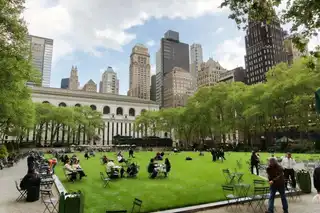

Loading comments ...